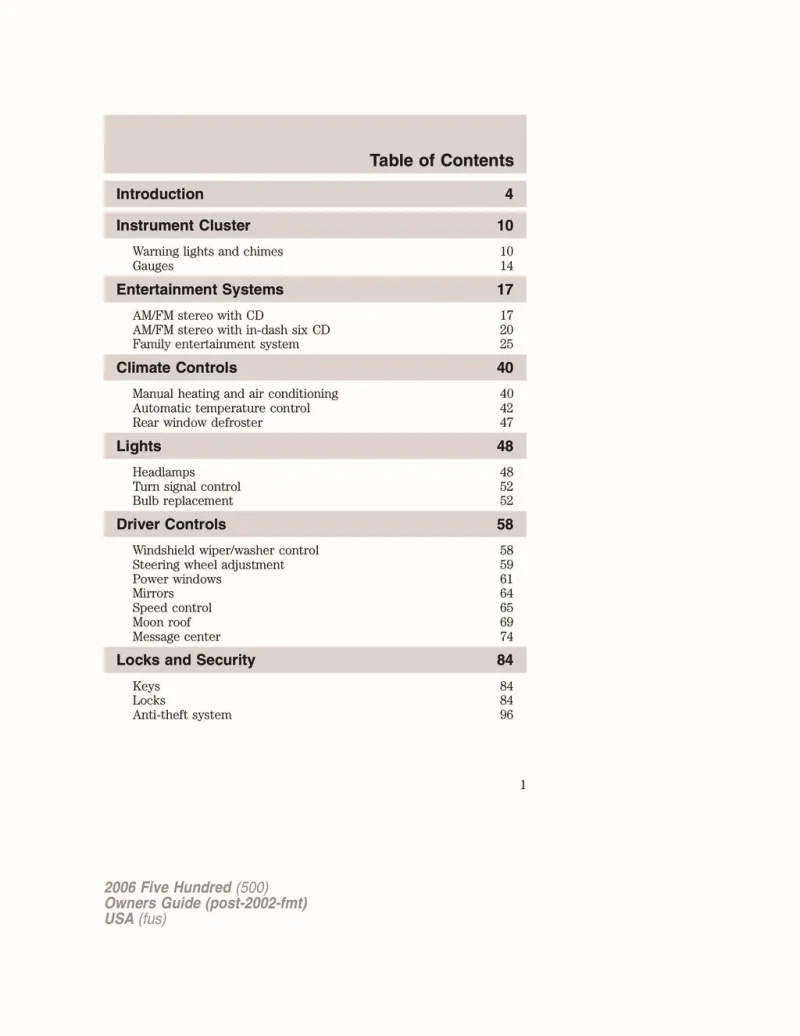2006 Ford Five Hundred Owner's Manual

Table of Contents
2006 Ford Five Hundred Overview
Introduction
The 2006 Ford Five Hundred is a full-size sedan that blends spacious comfort with reliable performance. Designed for families and individuals alike, this model underlines Ford's commitment to practical transportation without sacrificing style. With a modern exterior and an interior designed for maximum comfort, the Five Hundred stands out in its class, appealing to those who prioritize both aesthetics and functionality.
Powertrains
The 2006 Ford Five Hundred comes equipped with two available powertrains. The standard engine is a 3.0-liter V6 that produces 203 horsepower, delivering a commendable balance of power and fuel efficiency. For those seeking a bit more muscle, an upgraded 3.5-liter V6 engine is also offered, generating 255 horsepower. Both engines are paired with a continuously variable transmission (CVT), allowing for smooth acceleration and responsive driving dynamics, whether you’re commuting in the city or cruising on the highway.
Trims
The Five Hundred is offered in three trims: SE, SEL, and Limited. The base SE model includes a robust feature set that caters to essential needs, while the SEL trim adds enhancements such as alloy wheels and upgraded audio. The Limited trim caps the lineup with luxurious features, including leather seating, a premium sound system, and advanced climate control. Each trim level is designed to cater to different preferences, ensuring a suitable option for every driver.
Features
In terms of features, the 2006 Ford Five Hundred is equipped with a variety of modern conveniences. Key highlights include an optional navigation system, keyless entry, and a host of safety features such as anti-lock brakes and dual front airbags. Additionally, the spacious interior provides ample room for both passengers and cargo, making it a practical choice for families and road trips.
Owner's Manual
The owner's manual for the 2006 Ford Five Hundred serves as a comprehensive guide, offering essential information on vehicle maintenance, operation, and safety guidelines. It includes valuable insights into troubleshooting common issues, understanding vehicle systems, and proper care to ensure longevity. Following the manual can help owners maximize their driving experience and safeguard their investment.
User manual download
The Ford Five Hundred owner manual for the 2006 model year is to be found in PDF downloadable format on this page. The owner manual for the model year 2006 is free and in English, but the repair manuals are usually not easy to get and may cost more.
Manual Questions
Fill the form below and someone will help you!
